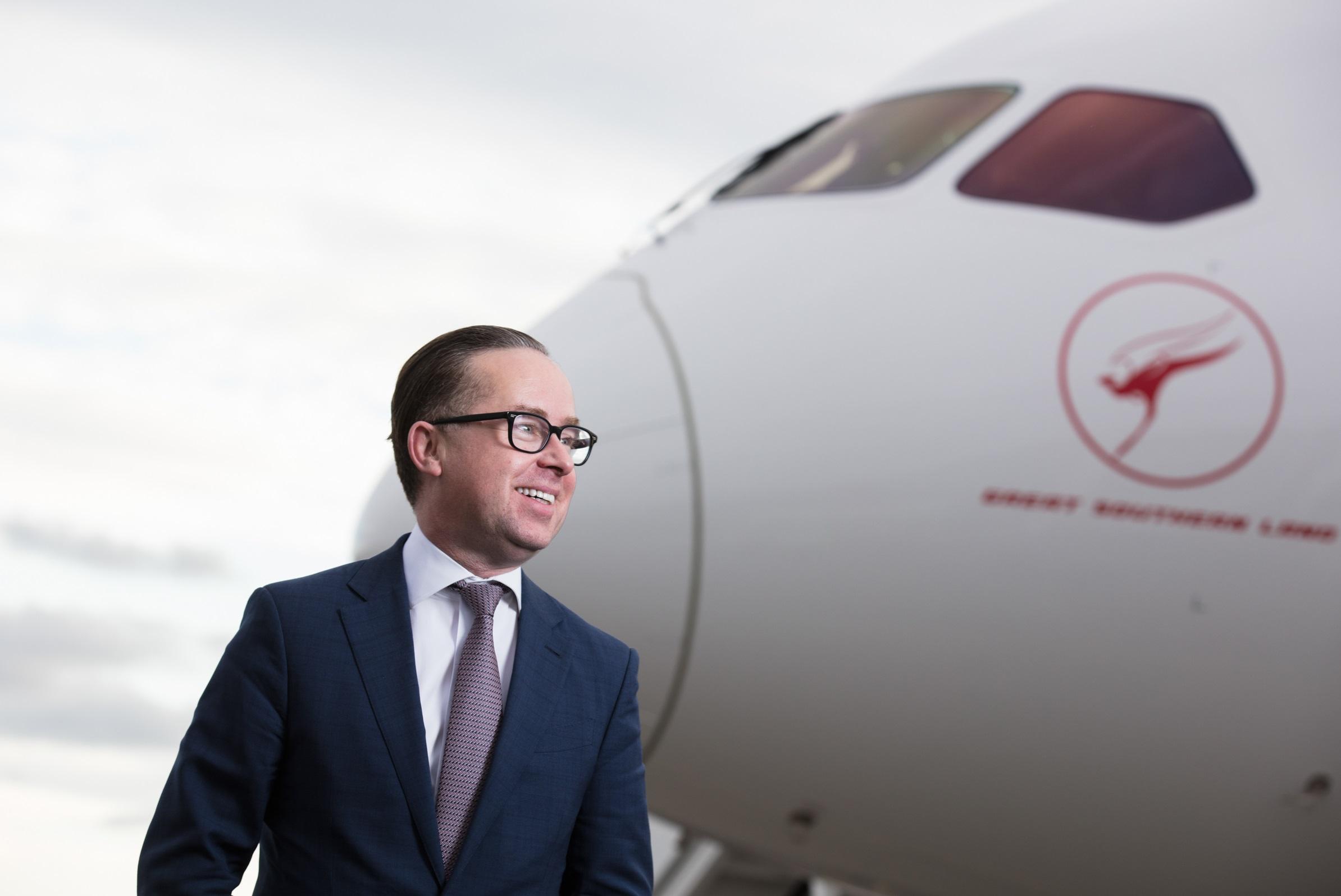
In April this year, Qantas caught the world’s attention when it launched its 17-hour London-Perth route. Operated onboard a Boeing 787-9 Dreamliner, the fl ight was largely packed by journalists writing pieces almost as long as the fl ight about how it felt to travel on the newly emerging ultra-long-haul sector.
The route remains in operation and Qantas CEO Alan Joyce has been so buoyed by its success that he has already challenged Airbus and Boeing to give him an aircraft by 2022 that will fl y non-stop from Sydney to London in 20 hours.
In the meantime, Joyce is considering where else he can deploy the Dreamliners that have proved so popular. The airline ordered another six in May, so there will be a total of 14 in the air by 2020.
He says: “The 787 has better economics and a longer range, and it has already opened up new routes, such as Perth to London. With a larger fl eet of Dreamliners, we’ll be looking at destinations in the Americas, Asia, South Africa and Europe.”
While the new route was also viewed with interest by the route development community, many were more focused on Joyce’s comments that the success of the new UK-Australia direct connection would free up certain aircraft to operate elsewhere. So what’s happened?
Expanding services
The Dreamliner is central to the reorganisation of Qantas’ international network, building capacity in Asia and the US, adding new services and using Airbus A380 aircraft previously operating on the London via Dubai route.
After a five-year gap, Singapore returns as a hub for Sydney, Melbourne and Brisbane passengers flying through to London or to Asian destinations Joyce says: “Singapore is Qantas’ largest hub outside of Australia, carrying more than 20 percent of our widebody fleet. It is a cornerstone city in our international network strategy and plays an important role in our ability to respond to the incredible growth we are seeing in travellers from Asia.”
He sees the region as predominantly the big growth area for Qantas, and the markets in China, south-east Asia and Japan are where his focus will be. With inbound traffic from Asia growing by 10 percent year-on-year, it’s no surprise that Qantas is building capacity to the region. The Dreamliner is now on routes to Hong Kong, supporting the existing A330 and A380 services.
In a statement, Alison Webster, CEO of Qantas International, says: “Introducing the Dreamliner to Hong Kong reinforces our commitment to Asia, where we are seeing strong demand from premium travellers.
“The customer response to the Dreamliner has been overwhelmingly positive and the feedback on the cabin environment, from the seats to the anti-jetlag measures, is fantastic. It’s an aircraft people really enjoy flying on.”
Extra services into Osaka, Manila, Singapore, Jakarta and Noumea have also been added. In Europe, there is a new agreement in place with Air France to codeshare on more than 200 flights weekly, connecting Australia through Singapore or Hong Kong to Paris.
Webster says: “The return of this popular codeshare delivers on our strategy of partnering to provide customers with access to an expanded network and more seamless travel experiences wherever they want to fly.”
Codeshare deal
In another déjà vu move, Qantas is resurrecting a codeshare agreement with Air New Zealand, covering 115 domestic routes in New Zealand and Australia. While the airlines will be partners on domestic networks, they will still compete on trans-Tasman services. Joyce says: “Our relationship with Air New Zealand goes back almost 80 years. We’ve been partners at various stages over that time and we have a lot of respect for them as a competitor.”
The US is a major Qantas market, with capacity growth there accelerating on the back of the Dreamliner. Freed-up A380s will be shifted from the London route and put to work on services to Los Angeles and Dallas, replacing 747s moving to Honolulu and San Francisco routes. Dreamliners will also fly to Los Angeles and San Francisco.
The eighth Dreamliner will be delivered in December, and the recently ordered six due for delivery from late 2019 will guarantee further network changes, so new non-stop destinations are likely to follow. Linking Australia and the UK nonstop is the catalyst for the network reorganisation and worlds away from the initial Qantas Kangaroo Route, a four-day journey in 1947.
The arrival of the 747 in 1971 shrunk the journey to 24 hours, and along with the A380 turned air travel into a mass-market business. Now aircraft technology is again reshaping the route.
Joyce says: “People want to get to their destinations without stopping. The big driver for passengers is they save time – on Perth to London it is three hours. With a bigger focus on premium passengers we think we can make the economics work.”
This focus is evident on the Dreamliner, which has a higher proportion of business and premium economy seats than the A380, although overall seating on the 787 is reduced to 246.
While flying non-stop from Perth to London is a first, the Kangaroo Route still involves two sectors for the majority of Australians living four to five hours away on the east coast. The Dreamliner allows Qantas to move its hub from Dubai to Perth, but for most there is no non-stop flight, just a choice between transit in Perth on the Dreamliner or in Singapore on the A380.
